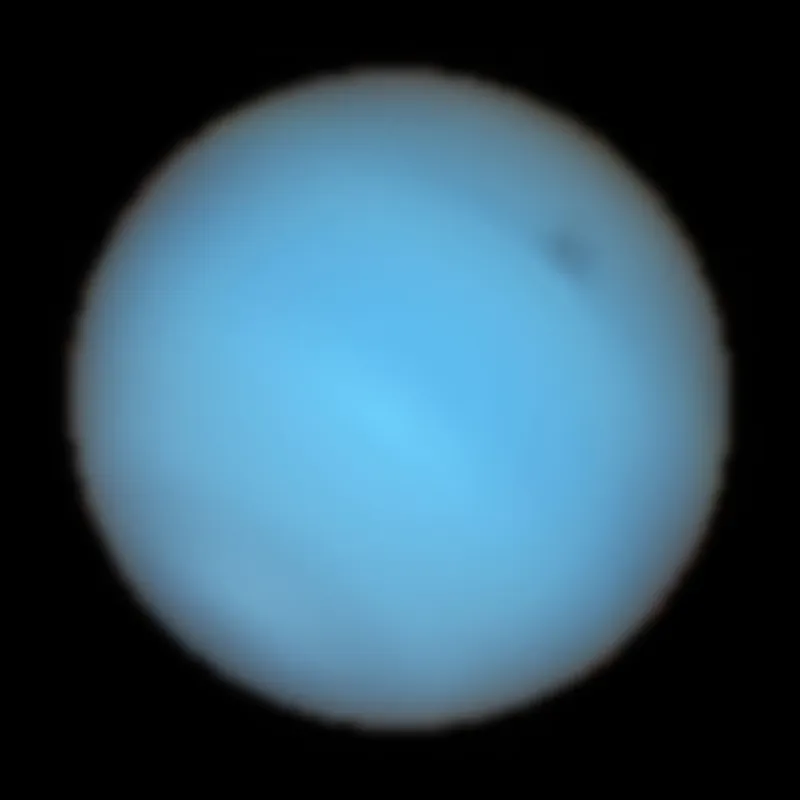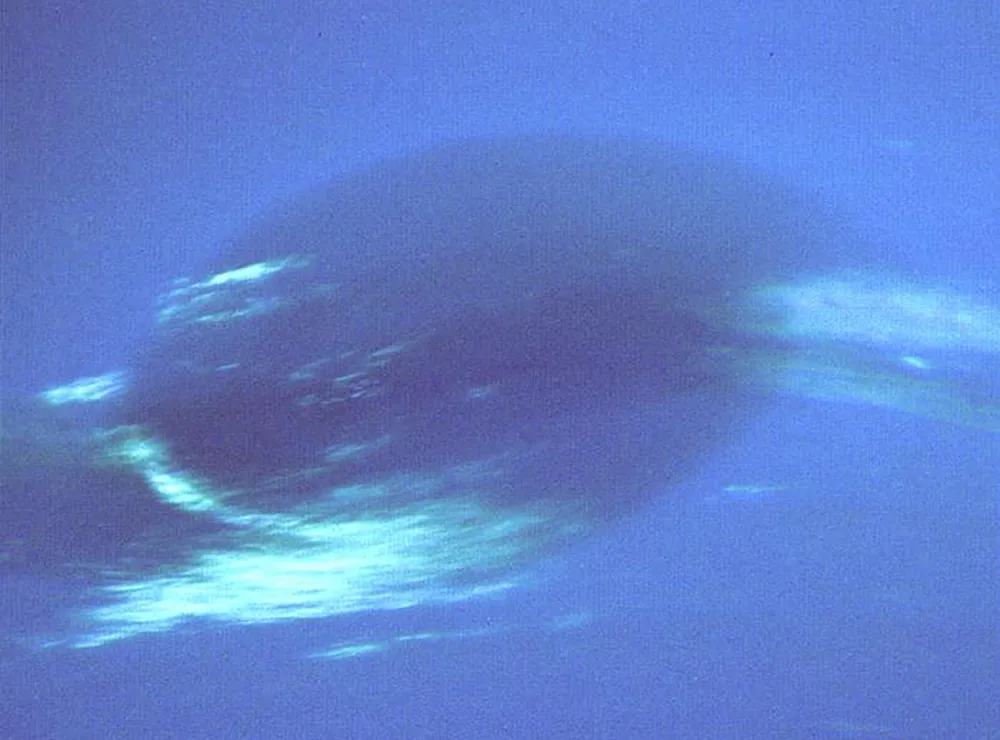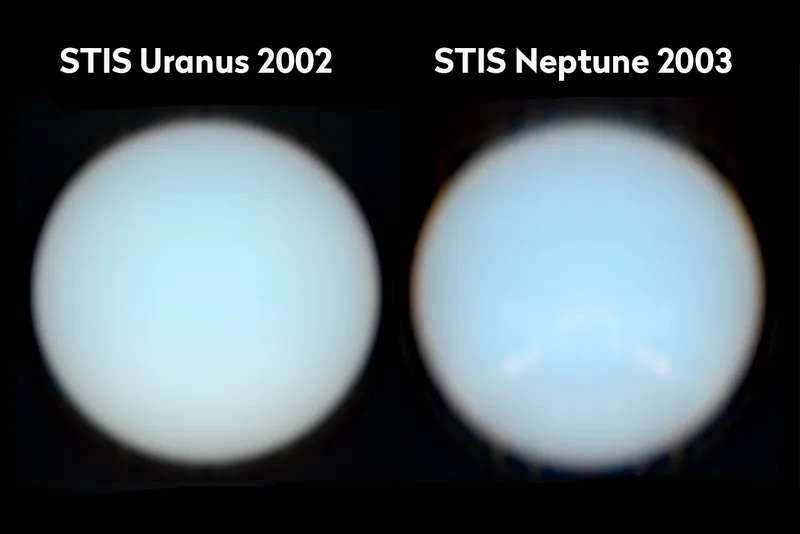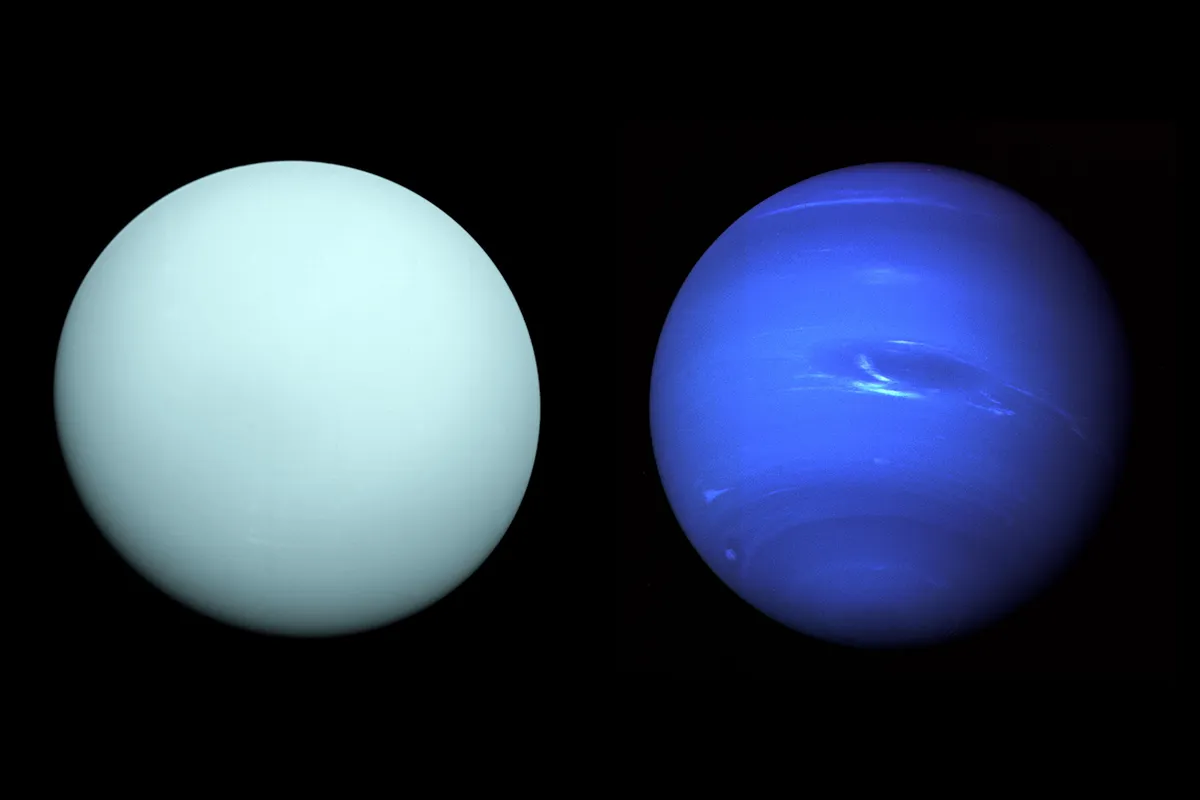The planet Neptune is named after the god of the sea, which makes sense because it is blue, but why is Neptune this colour?
Discovered in the mid 1840s, the planet Neptune is the 8th and most distant planet of our Solar System (since Pluto was reclassified), orbiting the Sun at an average distance of 4.5 billion kilometres.
Neptune is named after the Roman God of the Sea.
This was done in keeping with the convention used for the other planets (which had been named after deities in Roman and Greek mythology), but it turns out this name is rather apt - because Neptune is indeed blue in colour.

Images of blue Neptune
Perhaps some of the most recognisable images of Neptune were captured almost 35 years ago, in June of 1989.
Hurtling through space at 10s of thousands of meters a second, Voyager 2 was on course to flyby, image and take measurements at the Neptunian system, its final target on its tour of the outer Solar System.
As well as confirming the presence of rings and moons, the images it beamed back appeared to showed Neptune to be a vivid, bright blue colour. But why is Neptune blue?
The answer lies in what it is made of.

Colour explained
The colour that an object appears to be when sunlight is incident upon it is a result of the absorption of some wavelengths and reflection of others, which is a direct result of what a material is composed of.
For example, a leaf contains chlorophyll which absorbs light at the blue and red ends of the visible spectrum, and reflects the rest, and thus makes leaves appear green.
So what is Neptune made of that makes it blue?

Neptune's composition and the colour blue
Measuring almost 50,000 km across, Neptune is often referred to as one of the giant planets, or specifically an ice giant.
These planets don’t have a surface as we would know it, instead they are dominated by gases and, at greater depths, liquids violently swirling around above a core made of silicate rock mixed with iron-nickel.
Sunlight is therefore reflected back into space, not by a solid surface as with Earth, but by gases in Neptune’s atmosphere.
These gases are dominated by hydrogen and helium with a smaller amount of methane and it is the methane that is responsible for Neptune’s colour - methane absorbs red light and reflects blue.
New discoveries have changed Neptune's colour

Curiously, the images returned by Voyager 2 of Neptune’s inner ice giant neighbour, Uranus, showed an altogether much paler blue-green planet despite the composition of its atmosphere being extremely similar.
This difference baffled scientists for years, with the most credible model suggesting that perhaps Neptune had a more substantial methane haze layer.
However, in 2024 it was argued that most of the difference in colour is actually a result of image processing.
The discovery revealed that Uranus and Neptune's colours are more similar than originally thought.

Voyager’s cameras did not take images in colour: instead they would have taken greyscale images at several different wavelengths (representing green, blue and red parts of the visible spectrum) and then colourised and recombined these to generate colour images.
For Neptune, these images were processed to highlight specific features like its large storms (the so-called large and small dark spots) and clouds moving at mind-boggling speeds driven by 2000 kilometre an hour winds, and this made things bluer than they should have been.
When this is corrected for and compared to extra data from images taken with the Hubble Space Telescope, Neptune is still blue, but only marginally more so than Uranus.
